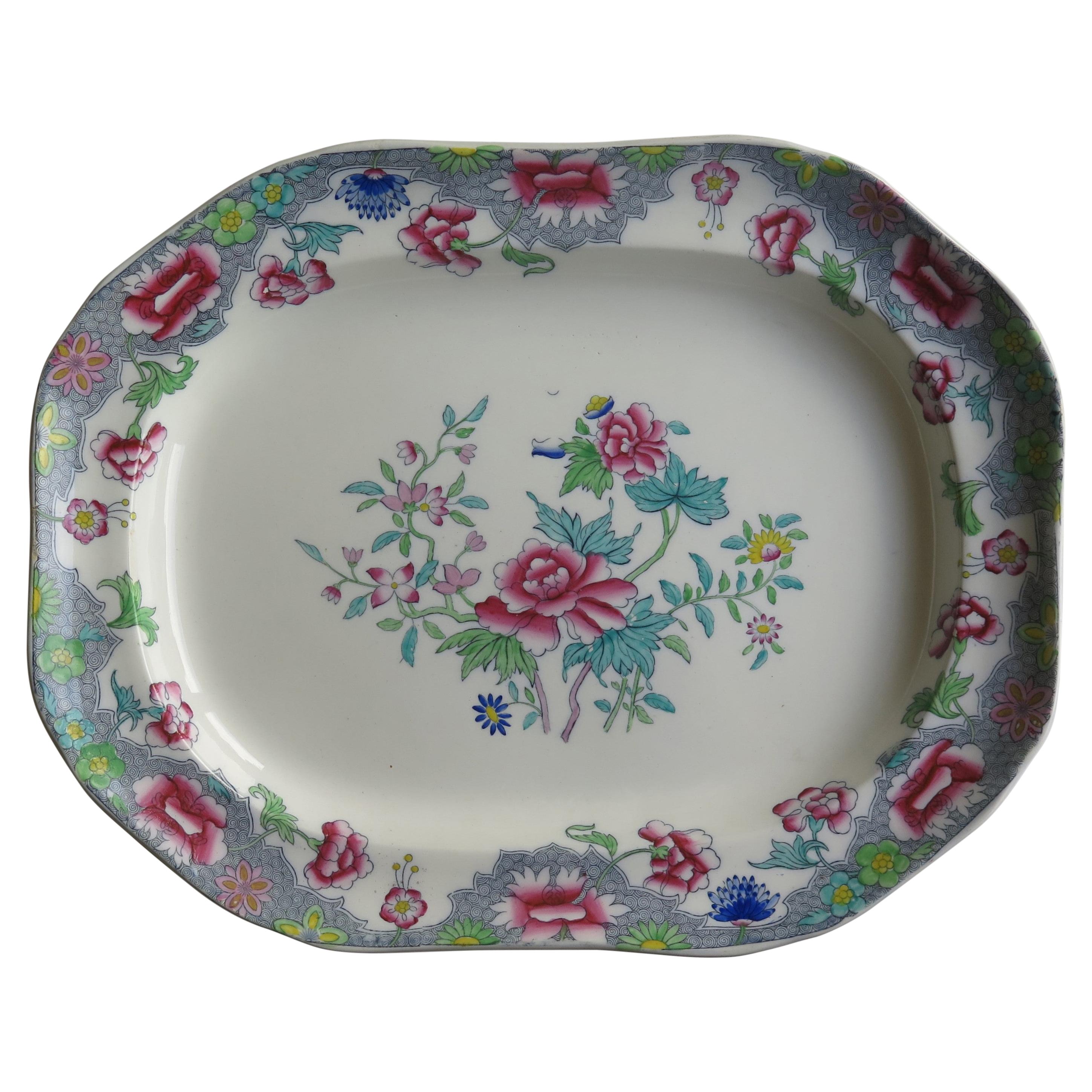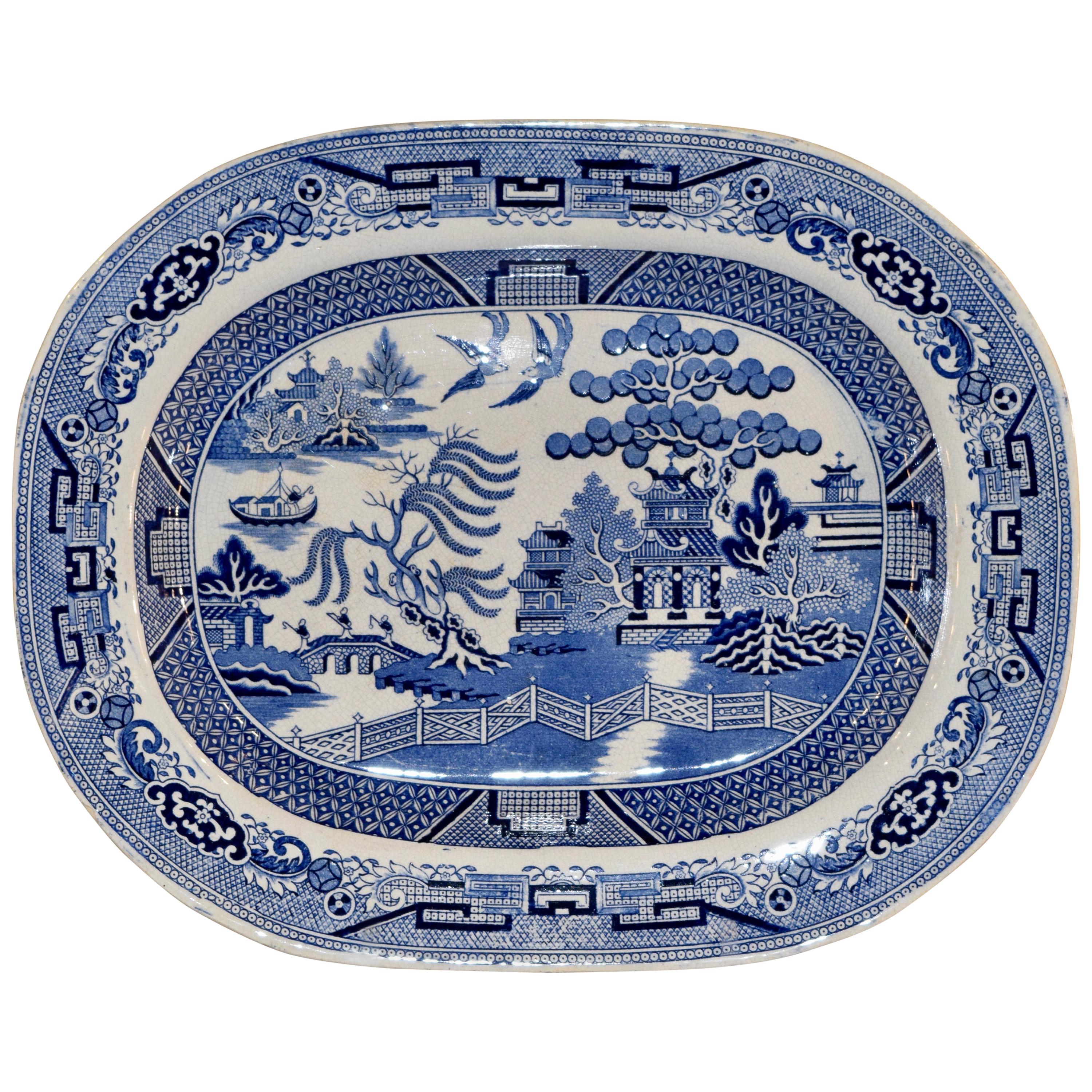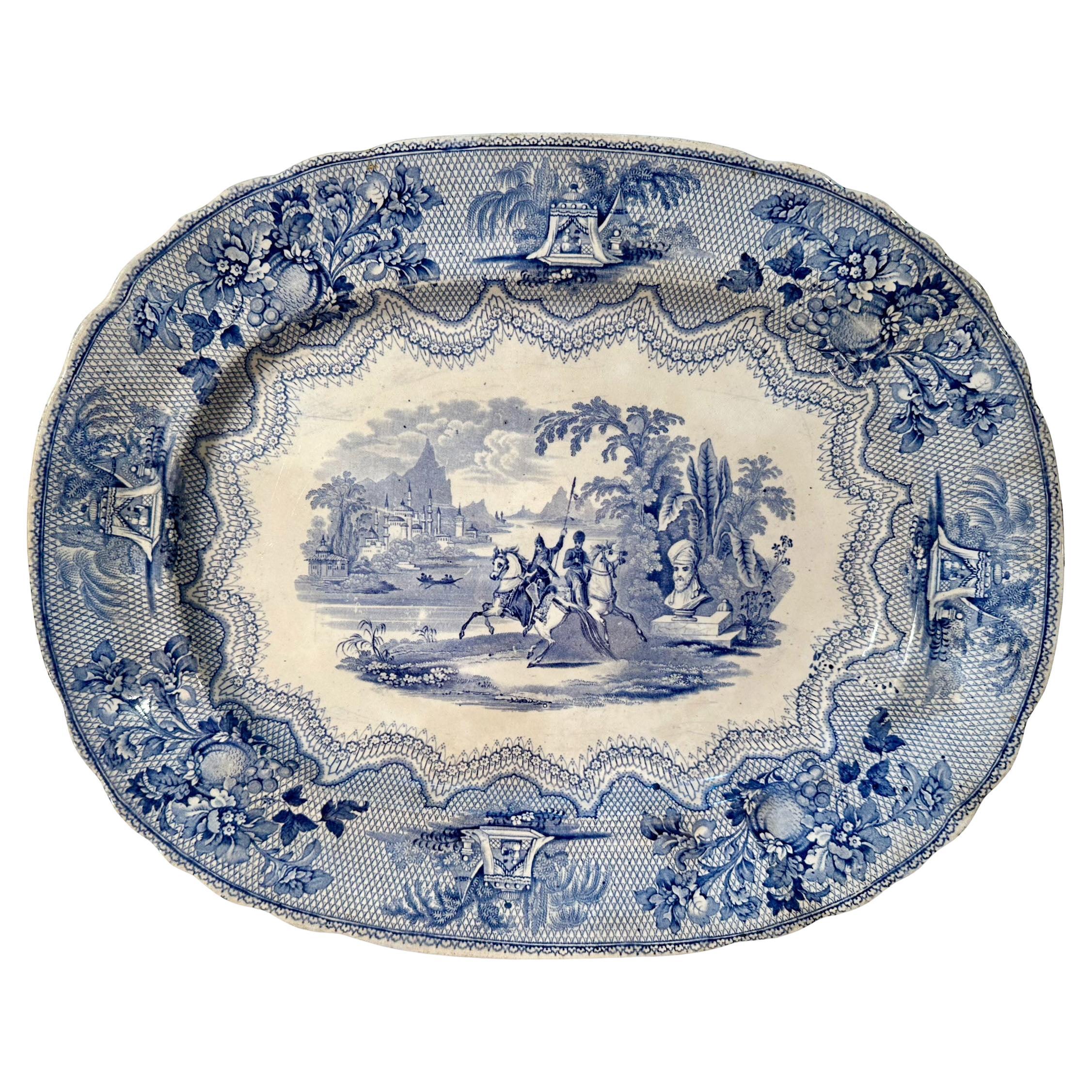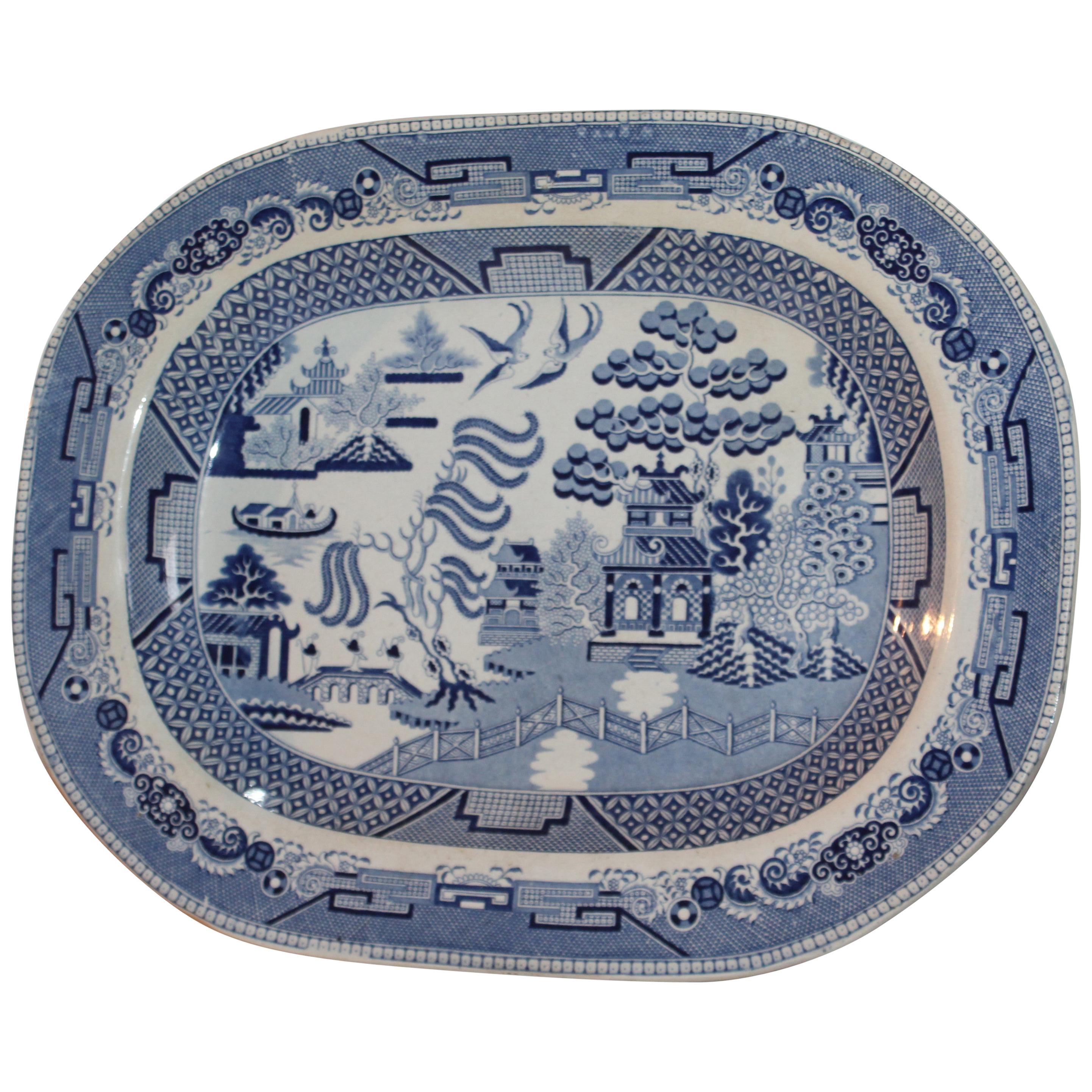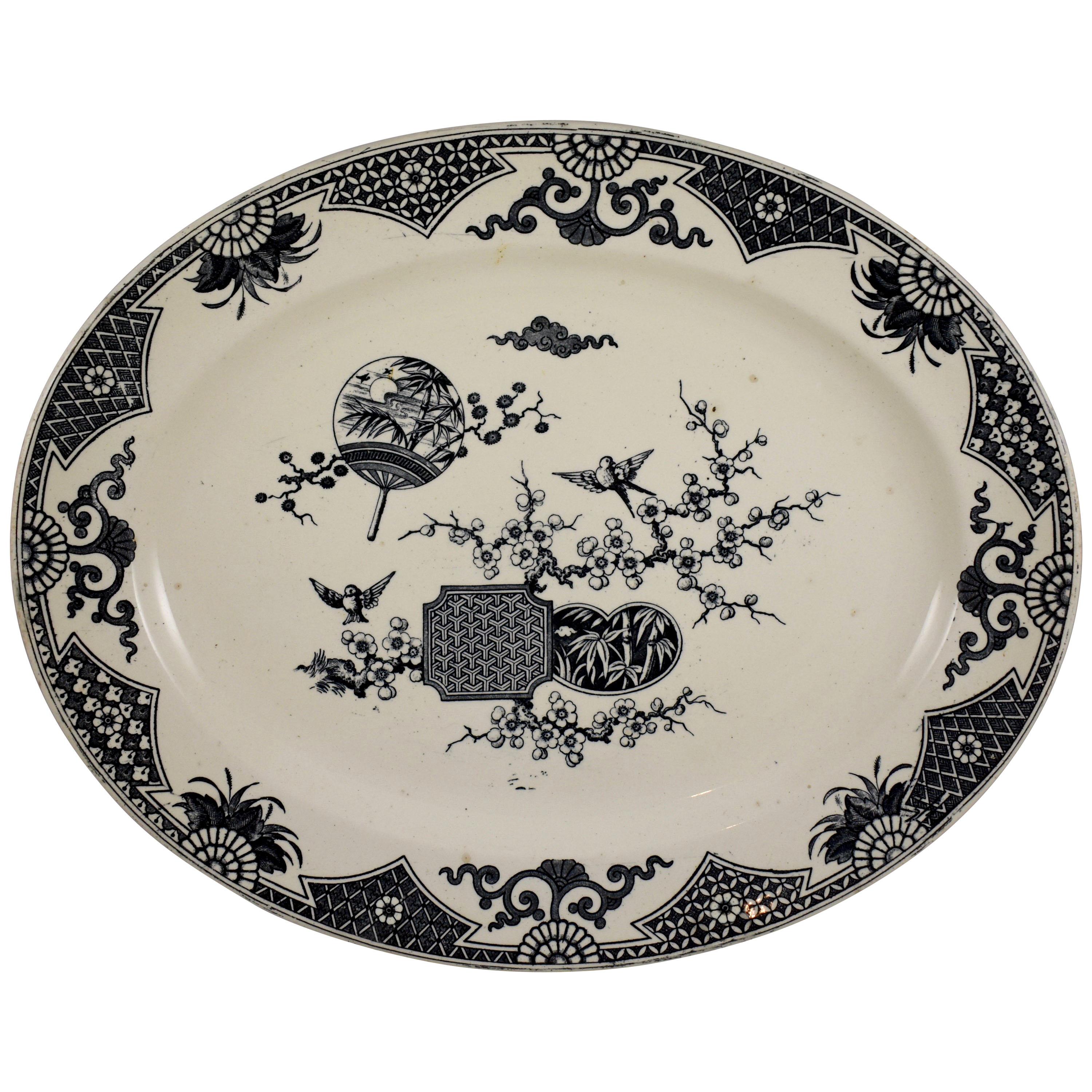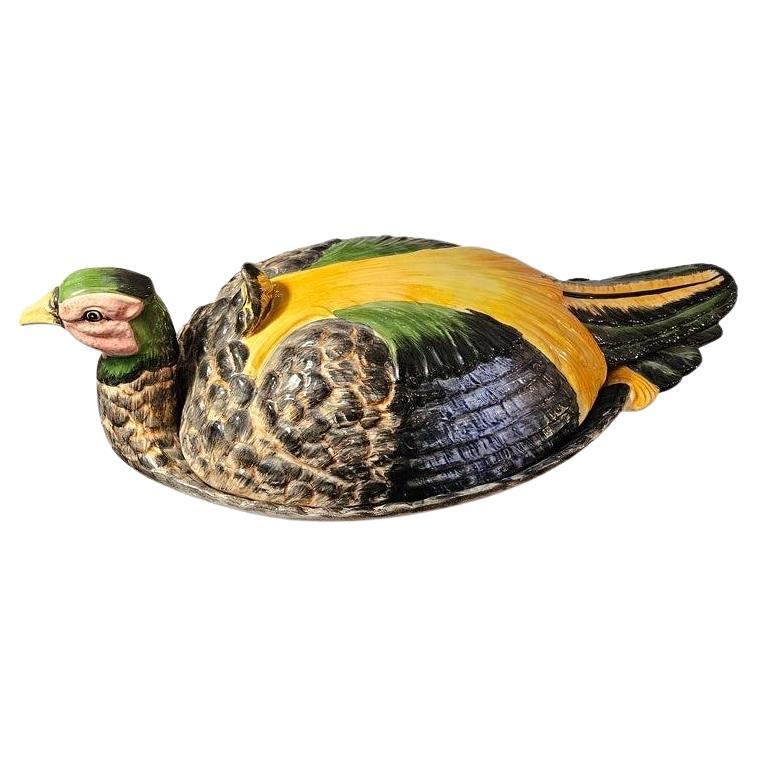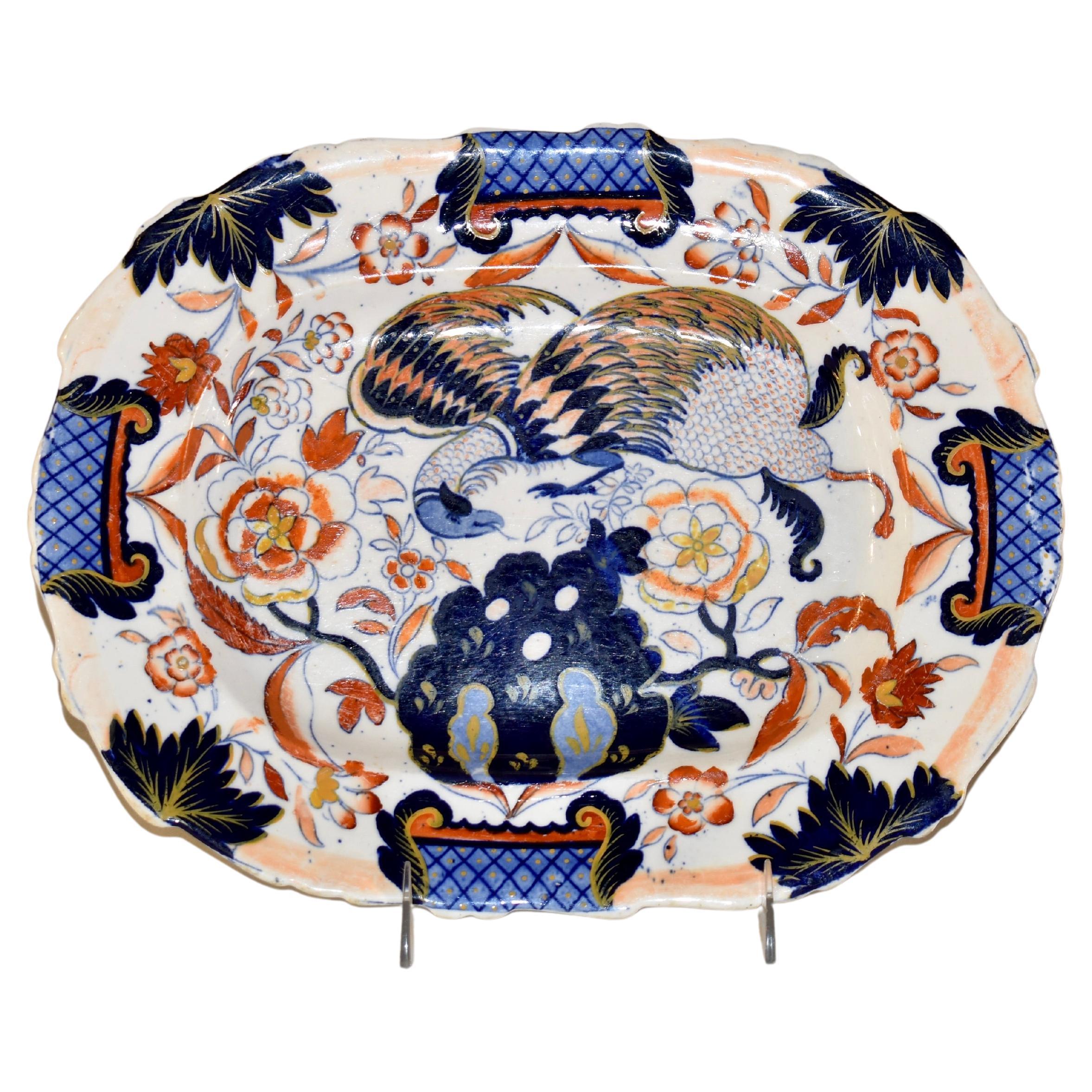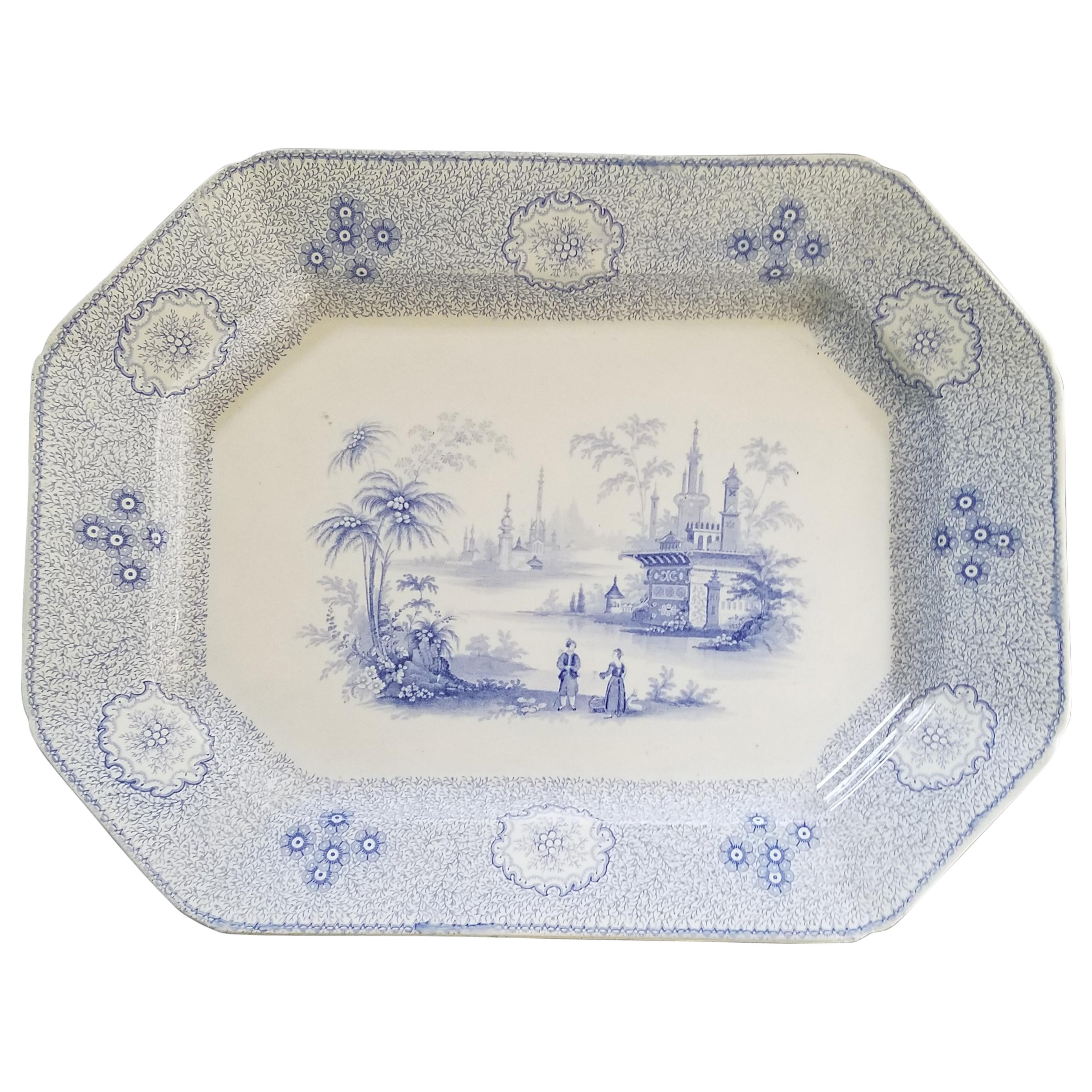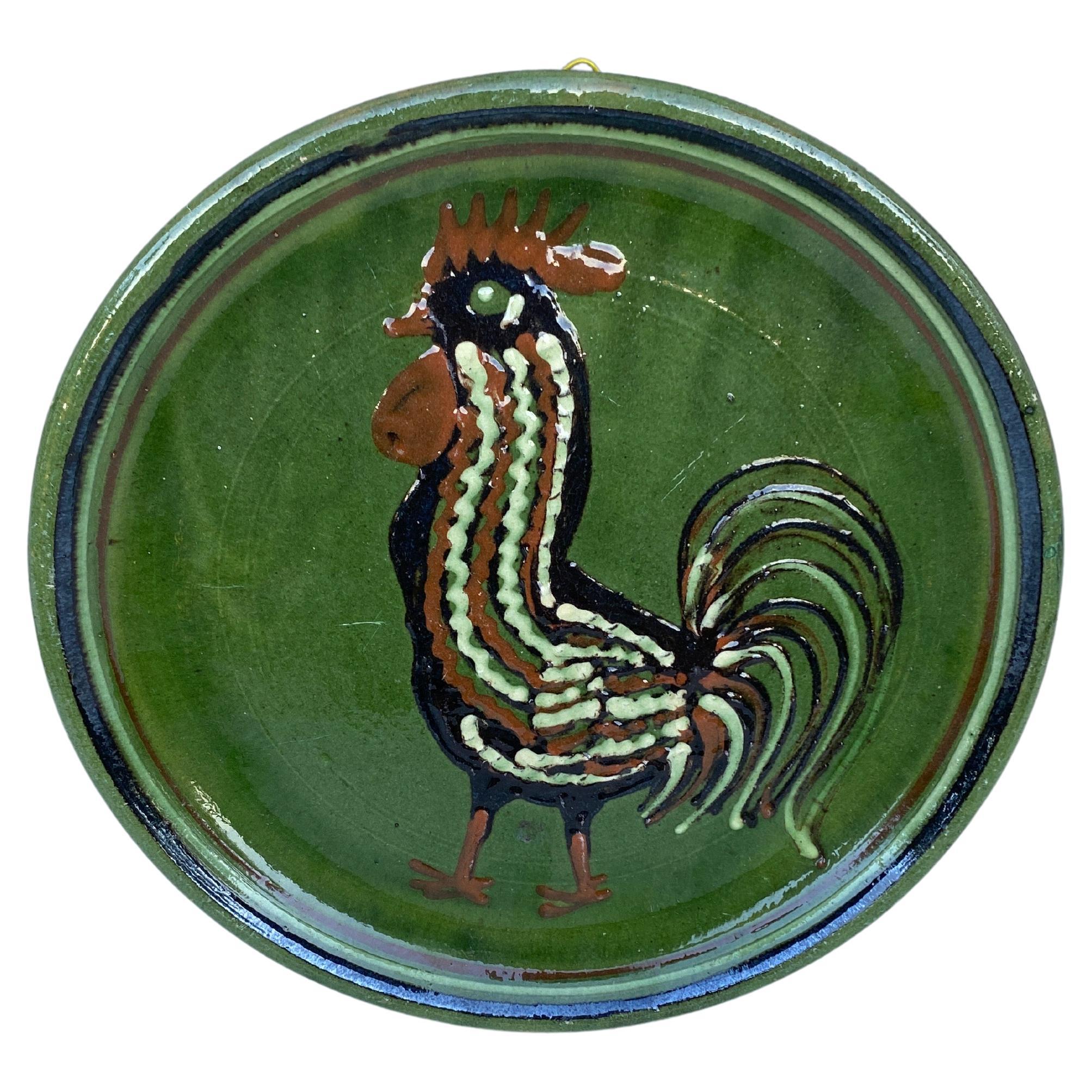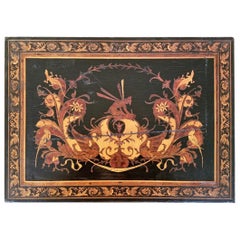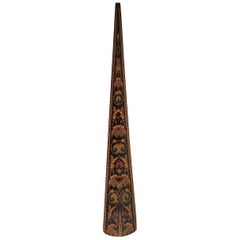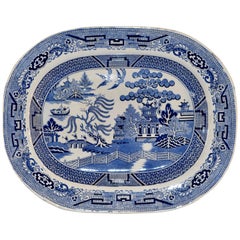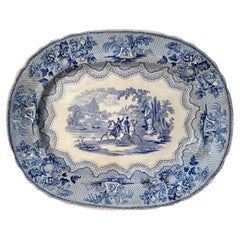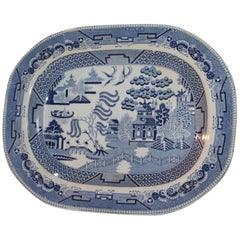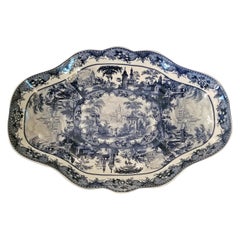
19th Century British Staffordshire Pottery Meat Platter or Game Dish
View Similar Items
Want more images or videos?
Request additional images or videos from the seller
1 of 14
19th Century British Staffordshire Pottery Meat Platter or Game Dish
About the Item
- Dimensions:Height: 12.5 in (31.75 cm)Width: 18.4 in (46.74 cm)Depth: 3 in (7.62 cm)
- Style:High Victorian (Of the Period)
- Materials and Techniques:
- Place of Origin:
- Period:
- Date of Manufacture:1860
- Condition:Near Mint.
- Seller Location:Dallas, TX
- Reference Number:1stDibs: LU3978112606992
About the Seller
4.9
Gold Seller
These expertly vetted sellers are highly rated and consistently exceed customer expectations.
Established in 2015
1stDibs seller since 2018
349 sales on 1stDibs
More From This SellerView All
- 19th Century British Tunbridge Ware Lap DeskBy Tunbridge WareLocated in Dallas, TXPresenting an absolutely gorgeous and extremely unique and rare 19th Century British Tunbridge ware lap desk. This lap desk is unlike any of it’s kind we have seen before. From cir...Category
Antique Mid-19th Century English High Victorian Decorative Boxes
MaterialsMaple, Walnut, Satinwood, Ebony, Wood
- Rare 19th Century English Tunbridgeware Hair Pin or SlideLocated in Dallas, TXPresenting an absolutely gorgeous and extremely unique and rare 19th century British Tunbridgeware hair pin/bobbin or slide. This slide is unlike any of it’s kind we have seen before…. it is a very rare survivor ! From circa 1860–1880. Made of walnut with gorgeous marquetry inlay on the entirety of the front with classic Tunbridgeware micro-mosaic all over the front. The rear is walnut. The marquetry inlay appears to be various different woods, namely, maple, walnut and satinwood. Would have been worn in a Lady’s hair bun with the micro-mosaic facing forward. This would have belonged to a very elegant lady in the mid to late 19th century. Tunbridge ware is a form of decoratively inlaid woodwork, typically in the form of boxes, that is characteristic of Tonbridge and the spa town of Royal Tunbridge Wells in Kent in the 18th and 19th centuries. The decoration typically consists of a mosaic of many very small pieces of different coloured woods that form a pictorial vignette. Shaped rods and slivers of wood were first carefully glued together, then cut into many thin slices of identical pictorial veneer with a fine saw. Elaborately striped and feathered bandings for framing were pre-formed in a similar fashion. There is a collection of Tunbridge ware in the Tunbridge Wells Museum and Art Gallery in Tunbridge Wells. The famous makers of Tunbridge ware were in the Tunbridge Wells area of Kent; their most notable work was from circa 1830-1900. Early makers of Tunbridge ware, in Tunbridge Wells in the mid-18th century, were the Burrows family, and Fenner and Co. In the 19th century, around 1830, James Burrows invented a technique of creating mosaics from wooden tesserae. Henry Hollamby, apprenticed to the Burrows family, set up on his own in 1842 and became an important manufacturer of Tunbridge ware, employing about 40 people. Edmund Nye (1797–1863) and his father took over the Fenner company when William Fenner retired in 1840, after 30 years in partnership with him. Thomas Barton (1819–1903), previously apprenticed at the Wise factory, joined the Nyes in 1836, and worked as Nye’s designer; he took over the business in 1863 and continued there until his death. In Tonbridge (near to Tunbridge Wells), George Wise (1703–1779) is known to have had a business in 1746. It continued with his son Thomas, and Thomas’s nephew George (1779–1869), who took over in 1806. In its early years the company made articles such as workboxes and tea caddies with prints of popular views; later items had pictures created from mosaics. Their workshop in Tonbridge, Wise’s Tunbridge Ware Manufactory, was next to the Big Bridge over the Medway; the building was demolished in 1886 to widen the approach to the bridge. Tunbridge ware became popular with visitors to the spa town of Tunbridge Wells, who bought them as souvenirs and gifts. Articles included cribbage boards, paperweights, writing slopes, snuffboxes and glove boxes. At the Great Exhibition of 1851, Tunbridge ware by Edmund Nye, Robert Russell and Henry Hollamby was shown; Edmund Nye received a commendation from the judges for his work. He exhibited a table depicting a mosaic of a ship at sea; 110,800 tesserae were used in making the picture. The manufacturers of Tunbridge ware were cottage industries, and they were no more than nine in Tunbridge Wells and one in Tonbridge. The number declined in the 1880s; competent craftsmen were hard to find, and public tastes changed. After the death of Thomas Barton in 1903 the only surviving firm was Boyce, Brown and Kemp, which closed in 1927. Marquetry was an old technique which was continued by Nye and Barton to create images such as birds or butterflies. ‘Green Oak’ as caused by the fungus Chlorociboria aeruginascens. Stickware and half-square mosaic was invented by James Burrows in about 1830: a bunch of wooden sticks of different colours, each having triangular or diamond-shaped cross section, were tightly glued together; in the case of stickware, the resulting block was dried, then turned to form an article such as the base of a pincushion. For half-square mosaic, thin slices were taken from the composite block, and applied to a surface.[1][2][4] Tesselated mosaic, was a development by James Burrows of half-square mosaic; it was adopted by George Wise and Edmund Nye. Minute tesserae were used to form a wide variety of geometric and pictorial designs. Many sorts of wood were used for the various colours; about 40 were in regular use. Only natural colors were used; green was provided by “green oak”, produced by the action of fungus on fallen oak. Designs for articles were often taken from designs of Berlin wool work.Category
Antique Late 19th Century English High Victorian Collectible Jewelry
MaterialsSatinwood, Walnut
- Art Deco Sheffield Silver Plated Bon Bon DishBy Frank Cobb & Co. 1Located in Dallas, TXGorgeous Art Deco British Old Sheffield plated silver bon bon dish. This is a piece of classic Art Deco! This is a British made silver plated, EPNS ...Category
Early 20th Century English Art Deco Platters and Serveware
MaterialsSilver Plate
- 19th Century Pair of British Oils on Canvas of River and Forest ScenesLocated in Dallas, TXPresenting a pair of classic Victorian oil paintings!! Unsigned oils on canvas featuring river and forest scenes. Both in the original frames. The British Victorians were ob...Category
Antique Mid-19th Century English High Victorian Paintings
MaterialsCanvas
- 19th Century English Burl Walnut Sutherland TableLocated in Dallas, TXLate 19th century English drop-leaf table from the Mid-Victorian Era. Made of gorgeous yellowish-brown walnut with a fantastic burl walnut table top. The patina on the top is simply glorious!! The table was made circa 1850-60. It sits on beautifully turned fluted legs with the porcelain and brass casters. Two of the legs swing inwards and outwards to extend the 2 leaves of the table. Fully extended the table has a fabulous curved and indented edge, in an oval shape on both ends. The center column is beautifully turned and fluted. The 2 side columns are again beautifully turned and fluted and end with 2 extending scrolling supports that end in turned bulbous twin feet. This is a high quality item and highly desirable! Antique Sutherland Tables...Category
Antique Mid-19th Century English High Victorian Side Tables
MaterialsWalnut, Burl
- 19C Middle Eastern Damascene ChargerLocated in Dallas, TXPresenting a stunning 19C Middle Eastern Damascene Charger of medium proportions. In beautiful original condition made of brass and inlaid with silver and copper in Islamic themes w...Category
Antique Mid-19th Century Jordanian Islamic Platters and Serveware
MaterialsSterling Silver, Brass, Copper
You May Also Like
- 19th Century Blue Willow Staffordshire PlatterLocated in High Point, NC19th century Staffordshire platter in the highly collectible "Blue Willow" pattern. The platter is marked R.K. and Co, which is the mark from Robinson, Kir...Category
Antique 19th Century English Victorian Platters and Serveware
MaterialsCeramic
$316 Sale Price20% Off - Staffordshire Blue Transferware Meat PlatterLocated in Tampa, FLA military scene Staffordshire transferware meat platter. Blue and white with marking on back. Circa 1890s, England.Category
Antique 1890s English Platters and Serveware
MaterialsPorcelain
- 19th Century Staffordshire Blue Willow Serving PlatterBy StaffordshireLocated in Los Angeles, CAThis 19th century large blue willow serving platter is signed Staffordshire, England. The condition is in mint condition.Category
Antique 19th Century English Country Platters and Serveware
MaterialsPorcelain
$556 Sale Price20% Off - English 19th Century Maple and Co. Meat PlatterLocated in Baton Rouge, LAThis stately 19th Century English porcelain meat platter features a scalloped rim, embossed deep draining channels, and is replete with basting...Category
Antique 19th Century English Edwardian Platters and Serveware
MaterialsPorcelain
- 19th Century Staffordshire Aesthetic Movement Transferware Platter, ‘Formosa’By Thomas Furnival & SonsLocated in Philadelphia, PAA large Aesthetic Movement platter, Thomas Furnival & Sons, Cobridge, Staffordshire, England, circa 1879. The Japanesque ‘Formosa’ pattern is transfer printed in black on a cream ...Category
Antique Late 19th Century English Aesthetic Movement Platters and Serveware
MaterialsEarthenware
- 19th Century Melon-Shaped Meat or Food DomeBy Shaw & FisherLocated in Sheffield, MAStamped "By the Queen's Royal Letter's Patent. Shaw & Fisher's Patent Oval Dish Cover. Sheffield," this pewter food dome dates from circa 1850. Metal holds heat and, therefore, keeps...Category
Antique 19th Century English Early Victorian Centerpieces
MaterialsPewter
Recently Viewed
View AllMore Ways To Browse
Staffordshire Blue Platter
Silver Meat Dish
Blue Transfer Platters
Antique Fenton Glass
Fenton Antique Glass
Antique Burslem Pottery
Staffordshire Pottery Houses
Antique Salt Dish
Blue And White Staffordshire Platters
Antique Glass Salt Dish
Fenton Blue
19th Century Blue White Platter Staffordshire
Staffordshire Church
Blue Fenton Glass
Fenton Glass White
Meat Platter Blue And White
Blue And White Meat Platter
Blue White Meat Platter
